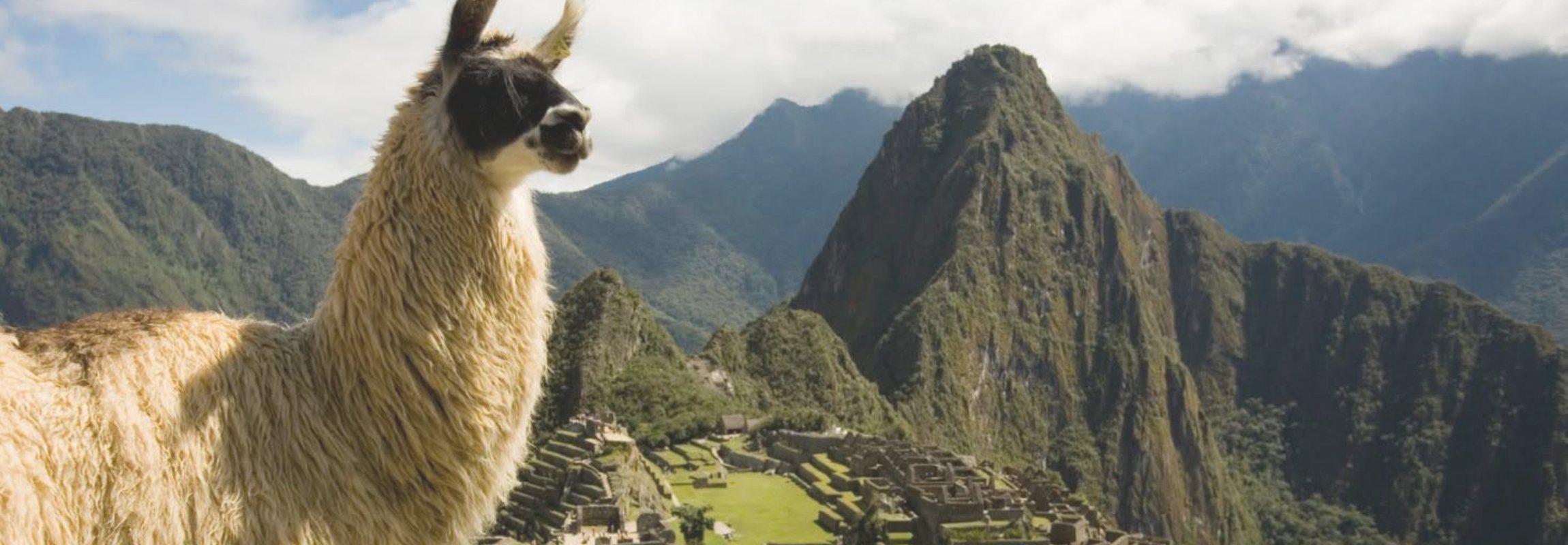
Peru is one of the most beautiful countries in South America. That’s why Rebecca Adventure Travel offers mind-blowing Peru tours. Best of all, explore Peru’s highlights with English-speaking guides while experiencing the magnificent country by yourself.
You may be wondering why Peru is a popular tourist destination. Well, Peru is one of the top 10 countries with the greatest biodiversity and natural resources in the world. For instance, in its territory, there are:
- 200 protected natural areas.
- 84 of the planet’s 117 life zones.
- 14 national parks.
- 15 national reserves.
- 9 national sanctuaries.
Moreover, Peru is home to more than 180 species of birds. Also, it has 3.500 varieties of orchids, 594 mammal species, and 590 different reptiles. However, it is worth mentioning that Peru frequently discovers new species, so this number may change in the future.
Why is Peru the best country to visit?
Peru is a great destination for family and friends tours. Explore the ancient citadel of Machu Picchu, discover the mysterious Nazca Lines, admire Lake Titicaca, and indulge in delicious food!
Peru is a paradise for adventure lovers and a must on your South America bucket list. You can choose Peru tours that include outdoor activities for curious beginners, amateurs, and experts. For example:
- Trekking.
- Climbing.
- Mountain biking.
- Surfing.
- Paragliding.
- Hang gliding.
- Camping.
- Canoeing.
- Kayaking.
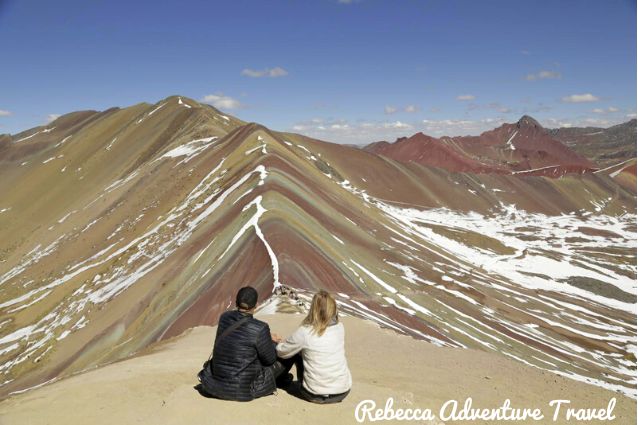
Vinicunca, Peru
What is Peru Most Famous For?
Peru boasts a rich cultural and geographical diversity influenced by Spanish, indigenous, African, and Asian cultures. Even before the Inca empire and the Spanish conquest, it served as a settlement site for ancient civilizations. Today, visitors can explore the country’s diverse architectural vestiges, including tombs, fortresses, ceramics, and metalwork, scattered throughout the Peruvian territory.
Although Machu Picchu, Nazca Lines, and internationally acclaimed cuisine have made Peru globally renowned, the country’s fascinating culture still manages to surprise visitors.
Peruvian Culture
With every Peru tour, you’ll discover its culture. It is a fusion of very varied languages, ethnicities, lifestyles, values, and attitudes. Nevertheless, Peruvians are well known as very hospitable to foreigners.
Like every Latin American country, contemporary Peru has its roots in its history. Nowadays, Peruvians identify with numerous ethnic categories, reflected in indigenous traditions as well as migration, especially from Japan and China.
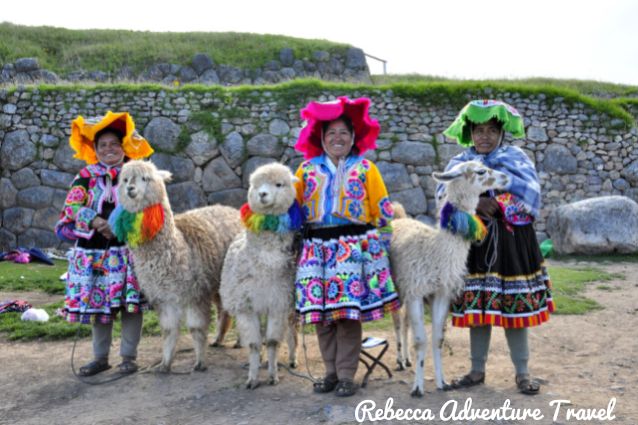
Peruvian culture
Is Peru Friendly to Tourists?
Peru is a friendly country to tourists. In general terms, Peruvians are warm, welcoming, and hospitable. Over the past years, the country has received over 4 million tourists. It’s a paradise for adventure lovers, foodies, and culture-seekers.
Check out more information about Peru that you might find helpful:
- Peru is a Spanish-speaking country. However, the official languages of Peru are Spanish, Quechua, and Aymara.
In addition, people speak 47 other indigenous languages in Peru. - The country spreads over 1.28 million km2 (0.5 million mi2). It’s the 19th largest country in the world.
- The country has a population of 32 million people. Lima is the capital and the largest city. 60.2% of the population define as mestizo (mixed between Caucasian and indigenous folk), 25.8% indigenous, 5.9% white, 3.6% black, and others.
- Peru is composed of three regions: Coast, Highlands, and the Amazon.
- The majority of Peruvians identify themselves as Christians, however, Catholicism is the most popular religion.
Where is Peru Located?
Peru is the third-largest country in South America. It’s a multicultural nation, situated in the western part of South America. It shares borders with Ecuador, Colombia, Brazil, Bolivia, and Chile.
What Is Peru’s Currency?
The Sol (S/) is the official currency in Peru.
Stores, restaurants, hotels, and service stations accept US dollars as a means of payment. However, you should take into account that Peruvians have an informal way of doing business, so you must have soles in order to buy things on the streets.
Tourists can exchange money in banks or exchange offices. Further, you can also find street cambistas, or informal exchangers on the streets, but the government doesn’t guarantee that transaction.
Peruvian Food
With a variety of landscapes that provide a wide range of fresh ingredients, Peru is a top gastronomic destination and Peruvian food is one of the best reasons to visit the country. Visitors can indulge in a variety of dishes, including:
- 500 different types of dishes
- 3,800 varieties of potatoes
- 2,000 different soups
- 300 varieties of chili peppers
Peru’s diverse gastronomy, which combines fusion, tradition, and innovation, has earned global recognition for its ancient flavors and ingredients, making it the home of some of the best dishes in the world. Chefs have successfully fused pre-Colonial, Inca, and international cuisines, making Lima the gastronomic capital of Latin America. Moreover, two of the top 50 restaurants in the world can be found in Lima.
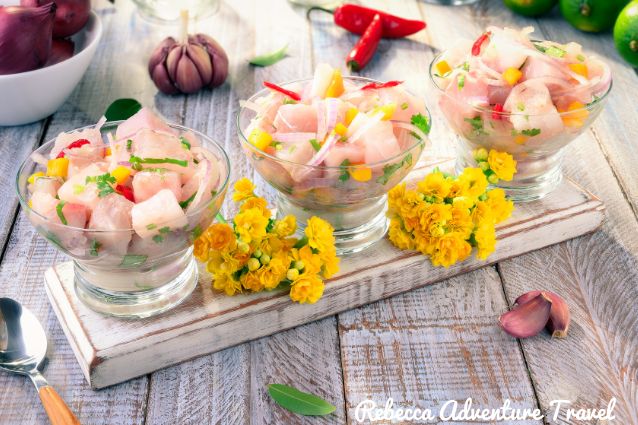
Peruvian food
Peruvian food is incredibly diverse, featuring a variety of ingredients such as corn, potatoes, tubers, legumes, and more. After the Spanish conquest, the Peruvian diet incorporated rice, wheat, and meats like beef, pork, and chicken. Recently, Peruvian chefs have worked towards re-establishing their pre-Hispanic cultural heritage by reinventing Novo-Andean food. For instance, Cusco City is one of the best places to indulge in indigenous Peruvian cuisine.
When you plan your Peru tour, you’ll be able to try many delicious dishes. What are the top 5 Peruvian dishes you want to try during your trip?
1. Ceviche
Peruvian fresh ceviche is a seafood dish made from cubed raw fish marinated in lime juice. Ceviche is the jewel of Peruvian food and the country’s national dish. To try a ceviche is a must on every Peru tour!
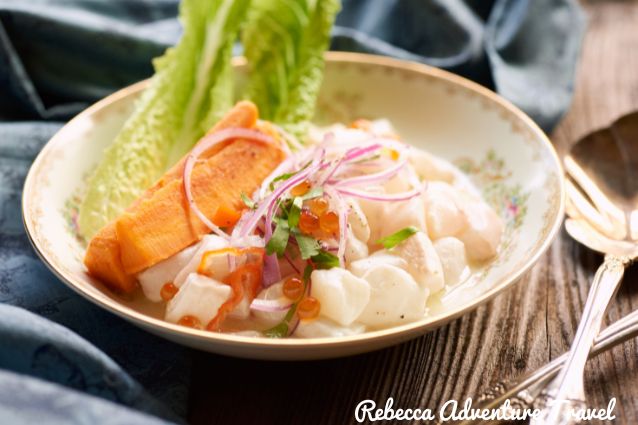
Peruvian Ceviche
Ceviche (pronounced “seh-vee-che”) has large amounts of citrus juice, either lime, lemon, orange, or a mixture of all three. The citrus juice “cooks” the raw fish, eliminating the bacteria. The fresh ingredients make this dish very simple, but powerfully delicious.
Popular along the Pacific coastal region of South America, this dish has similar variations in neighboring Ecuadorian cuisine. If you have already enjoyed Ecuadorian gastronomy, you are likely to find Peruvian cuisine equally delightful.
Ceviche can also be found in Ecuador and Chile. However, despite being close and having similar dishes, Ecuadorian cuisine, and Chilean dishes have their own twist. For instance, Peruvian ceviche also includes hot chili peppers (aji), sliced onions, salt, and peppers, and can be enjoyed as an appetizer or accompanied by corn, sweet potato, lettuce, maize, and avocados.
Peruvian chefs recommend tasting a ceviche along with Pisco (Peruvian brandy). Pisco is obtained from the distillation of fermented Peruvian grapes and juices. It can taste like Grappa, while others relate it to Tequila.
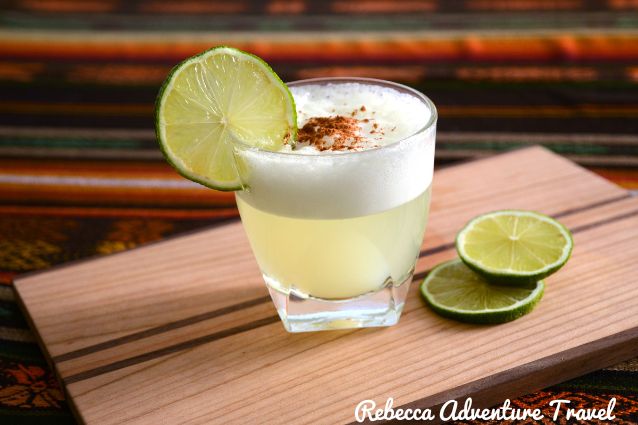
Pisco
2. Tiradito
Tiradito is a delicious Japanese-Peruvian fusion dish that originated from the Japanese migration to Peru in the 19th century. Combining elements of both ceviche and sashimi, the dish features thinly sliced raw fish that is “cooked” in citrus juices, resulting in a texture similar to Italian carpaccio.
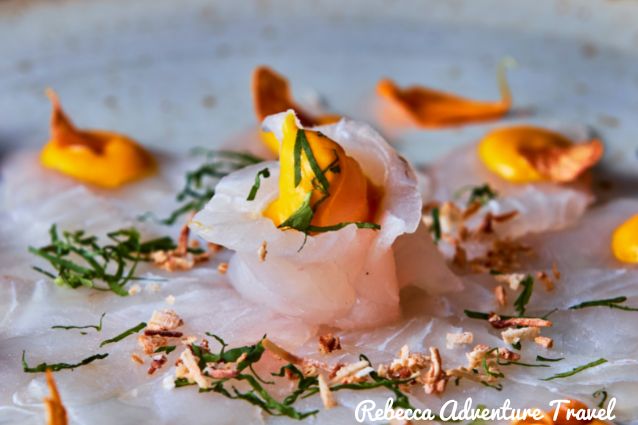
Tiradito
The classic tiradito sauce has lime juice and purée made from hot peppers that gives them a deliciously spicy kick.
3. Causa Limeña
Causa limeña is a potato layered casserole originally from Lima. The stuffed causa is a Quechua dish that can be found all over Peru. It’s a cake roll with bright colors made from traditional Peruvian ingredients.
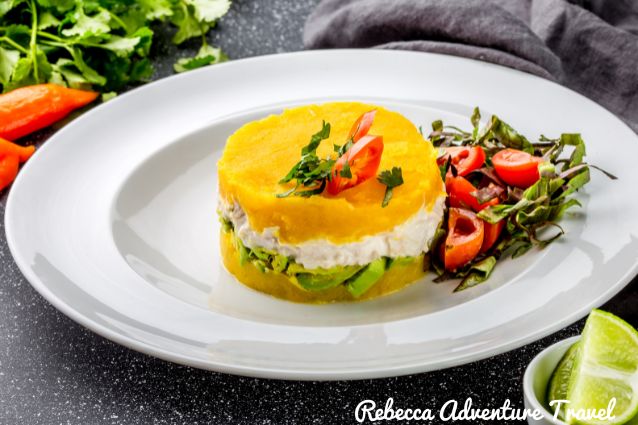
Causa limeña
The dish combines mashed potatoes with oil, lime, and hot chili peppers, and is served with avocado and a choice of chicken, tuna, or salmon. Causas are served cold.
4. Guinea Pig with Traditional Sauce
Why do Peruvians eat guinea pigs? Cuy, or guinea pig, is one of the most popular sources of protein in the Andes. Since the Inca empire, this delicacy dish has been served with potatoes and sauce throughout the continent.
Many tourists find it curious that people in South America like to eat guinea pigs because they resemble house pets back home. However, in the Andes cultures, they have never seen rodents as pets. Even so, they are cooked whole, even with the head, teeth, eyes, and ears.
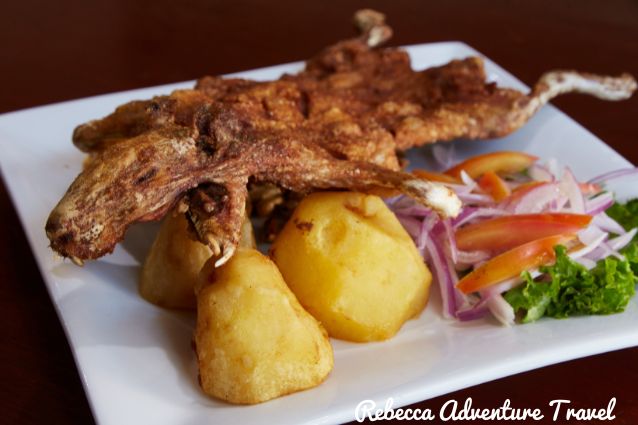
Guinea Pig, or ”Cuy“ in Spanish
Moreover, Peruvians, Ecuadorians, Bolivians, and Colombians, have eaten guinea pigs since ancient times. Its dark meat tastes like wood smoke and beneath they have a crispy golden skin.
Traditionally, locals stuff the dish with herbs and slow-roast it over an open wood fire. Eating it with your hands allows you to experience the fusion of salt and sweet flavors that the dish offers.
5. Anticuchos
Anticuchos are cow’s heart skewers served with potatoes, onions, and tomatoes. One can find them in any market throughout the country as they are one of the best Peruvian street foods.. The beef is cooked slowly over burning coals.
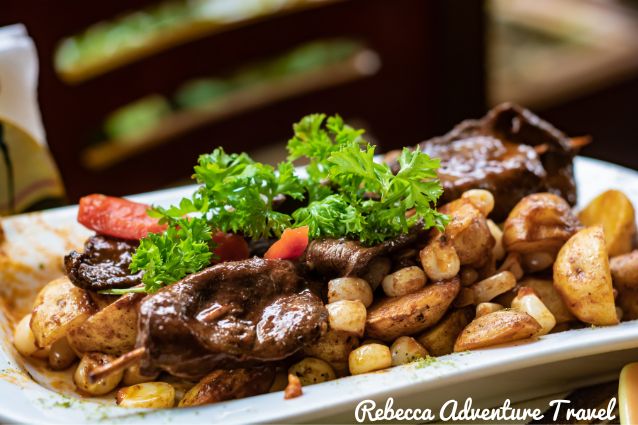
Anticuchos
They can be found in anticucheria, or anticucho restaurants in the evenings seasoned with garlic, vinegar, cumin, and chili peppers. Even though the traditional dish is made of cow’s heart, chicken and steak anticuchos are also popular.
What are the best months to visit Peru?
The climate in Peru is diverse. The country has a combination of tropical latitudes, mountain ranges, topography variations, and two ocean currents (Humboldt and El Niño). Moreover, Peru has 4 seasons:
- Summer: December 22 to March 21 (it’s the rainy season in the Highlands and the Amazon).
- Autumn: March 22 to June 21.
- Winter: June 22 to September 22.
- Spring: September 23 to December 21.
The Coastal region features moderate temperatures, low precipitation, and high humidity, while the mountainous region experiences frequent rain and low temperatures, particularly at high altitudes in the frozen peaks of the Andes. In contrast, the Amazon region has high temperatures and heavy rainfall.
What are the travel requirements to visit Peru?
As with any South American country, Peru is an astonishing place. For example, tourists marvel at their astonishing culture, vast landscapes, amazing fusion food, and millenary history. If you’re planning your Peru tour, here is important information for your trip:
Visa Requirements
Peru is an open-borders country. Depending on where you’re from, you should check the travel requirements in order to confirm if you need a tourist visa to enter Peru. Citizens from Argentina, Brazil, Paraguay, Uruguay, Ecuador, Colombia, Bolivia, and Chile are able to enter the country just by showing their national ID cards.
Moreover, for tourists from the United States, European Union, and Canada passports, you don’t require a visa to enter. The maximum length to stay in Peru is 183 days. Also, foreigners need to present a valid passport with a validity of six months from the date they entered the country.
Medication and Healthcare
There are no compulsory vaccinations for entering the country. However, if you plan to visit the Amazon region, the Ministry of Health recommends getting vaccinated against yellow fever. You can find more information about vaccinations on the Ministry of Health’s official web page.
Why is Peru such a popular tourist destination?
Peru is certainly one of the most captivating countries in South America. It’s a paradise for nature lovers, culture-seekers, and curious travelers. The country offers delightful Peruvian food, colorful textiles, and history. Therefore, when you plan your next Peru tour, check out Rebecca Adventure Travel’s amazing options that include mind-blowing destinations!
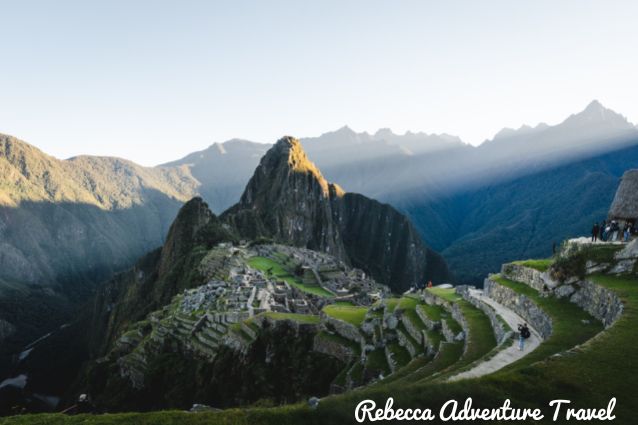
Machu Picchu
Amazon Rainforest in Peru
The Amazon Basin in Peru occupies more than three-fifths of the country’s area. In Spanish, the Amazon is known as the selva or jungle. The Peruvian Amazon borders Colombia, Peru, and Bolivia. Peru has the second-largest portion of the Amazon rainforest, after Brazil. It covers more than 60% of Peruvian territory. However, only 5% of the population lives in the area.
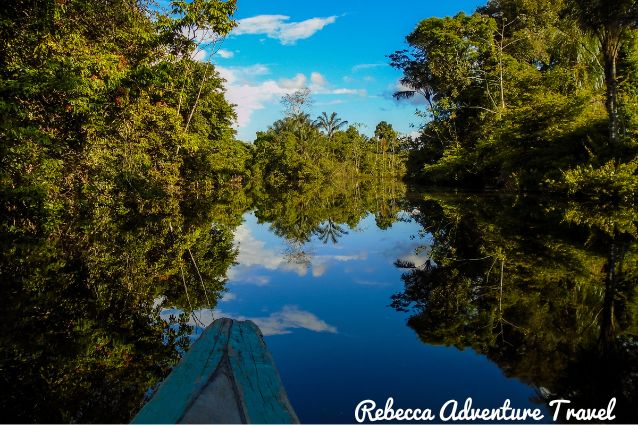
Peruvian Amazon
Did you know that the Amazon is the world’s largest rainforest and river system? Also, it’s the most biologically diverse place on Earth! The Amazon is the refuge for jaguars, harpy eagles, pink dolphins, black spider monkeys, and poison dart frogs, among others. Moreover, it contains one in 10 known species on Earth. This makes it a fascinating place, full of interesting facts and unique wildlife.
In Peru, wildlife will amaze tourists, with fascinating mammals, birds, and reptiles.
If you’re lucky, you’ll be able to see:
- Red Howler Monkey
- Pink River Dolphin
- Amazonian Tapir
- Sloth
- Capybara
- Macaw
- Toucan
- Black Caiman
- Green Anaconda
- Poison Dart Frog
Cusco
Cusco is located in the southeastern part of Peru, at 3,400 meters above sea level (11,200 ft). It is considered the Historical Capital of Peru because of its cultural importance to the country. Moreover, it was the capital of the Tawantinsuyu Inca Empire between the 15th and 16th centuries. And, in 1983, the city was declared a World Heritage Site by UNESCO.
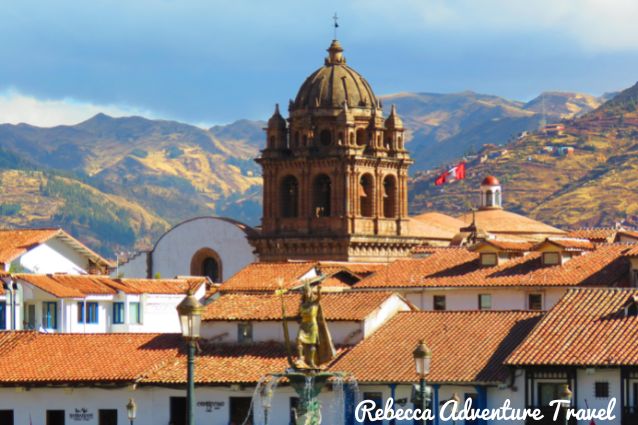
Cusco
Cusco’s mystical charm never fails to amaze tourists, as the city has maintained its ancestral and magical living history. Colonial and republican houses, monasteries, and churches remain intact, providing visitors with a glimpse of impressive construction techniques used by the Incas. Additionally, one can admire the stunning landscape and vibrant culture of the city.
Machu Picchu
An American archeologist discovered Machu Picchu in 1911.. Historians think the Inca citadel could have been a retreat for Inca leaders. Nowadays, more than 1 million people visit Machu Picchu annually. In 1983, UNESCO declared Machu Picchu a World Heritage Site. and, in 2007, it was voted one of the New Seven Wonders of the World.
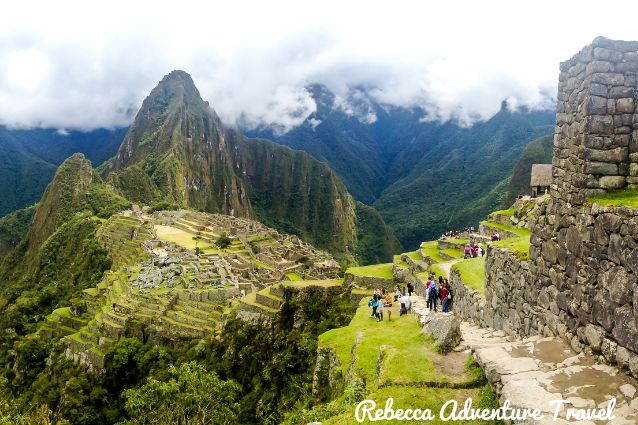
Machu Picchu
A tour to Machu Picchu with Rebecca Adventure Travel is like stepping into a thrilling dream. The electric blue skies and spectacular Incan architecture would dazzle you.
8 Day Machu Picchu & Galapagos Classic
Build Your Own Trip
Rebecca Adventure Travel offers tours from 4 to 21 days around Peru, so you can discover this enigmatic country!
You can also contact us to create your own customized trip. If you have any special requests, like a private tour, a honeymoon, a family trip, or a very short tour, our destination experts will be happy to help you!




